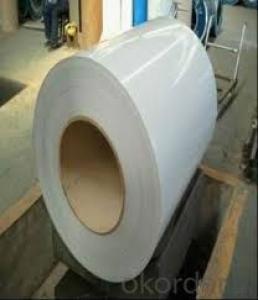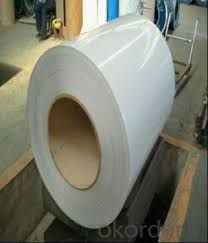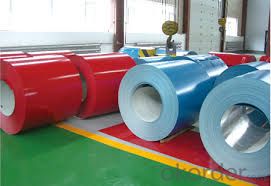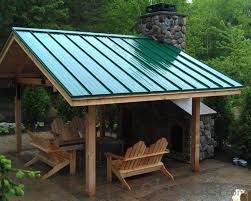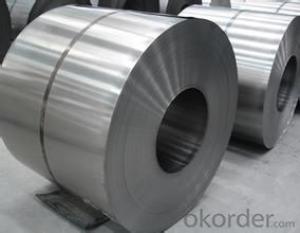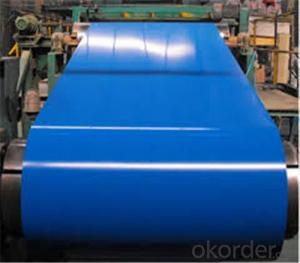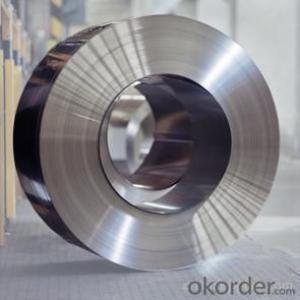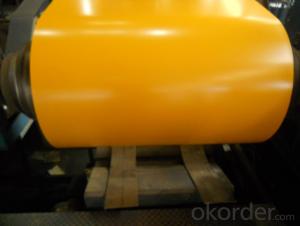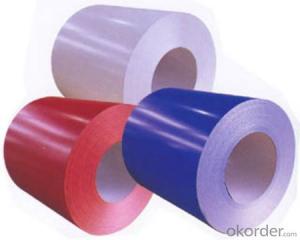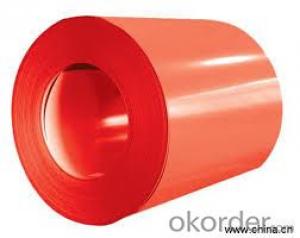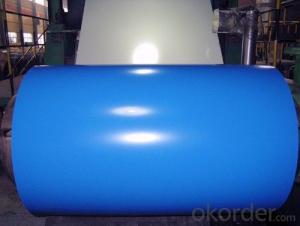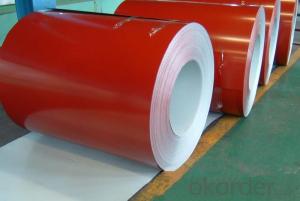Printing Aluzinc Steel Rolled/Prepainted Cold Rolled Galvanized Steel Sheet Coil
- Loading Port:
- Shanghai
- Payment Terms:
- TT OR LC
- Min Order Qty:
- 25 m.t.
- Supply Capability:
- 10000 m.t./month
OKorder Service Pledge
OKorder Financial Service
You Might Also Like
Product Description
Specifications;
1. Aluzinc coating mass: 30g-275g/sqm
2. Coil weight: 4-6 tons per coil
3. Edge treatment: Mill edge or cut edge.
4. Technical treatment: Bright annealed, flatting, cold harden.
5. Surface treatment: Annealed, bright finish, dull/bright finish, slit edge.
6. Spangle: Normal/small/big/zero spangle.
7. Delivery terms: FOB / C&R / CIF
8. Supply Ability: 30000MT/month
9. Application: The construction industry: The roof structure, keel, grill, Clapboard, ceilings, fire shutter doors, etc; The light industry, the Automobile, agriculture, animal husbandry, fishery, casing of household Electronic application, civilian smoke stack, etc.
10. Delivery time: Within 30 days after the receipt of L/C or Signed the contract or according to customer's requirement.
Special design available according to requirement; Anti-corrosion And high-temperature resistant with black painting; All the production process Are made under the ISO9001: 2000 strictly
Second Glance of Photo
Galvanzied steel coil( GI, CRC)
Color coated steel coil(PPGI)
Package: Sea worthy Export Packing Standard export and seaworthy packing. (waterproof paper and metal sheet protection with fluted rings at inner and outer edges, 4 eye bands and 4 circumferential bands fasten the coil)
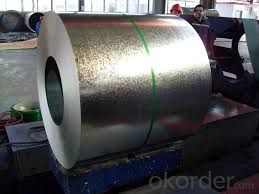
FAQ
1. Do you have QC team?
Yeah, sure, our QC team is very important, they will keep the quality control for our products.for quality inspection every day.
- Q: What are the industries that consume the most steel?
- I'm guessing manufacturing
- Q: I heard on some shows that you can carbonise steel by heating it red hot then dropping it in black oil. i cant find this no where online, and the process for commercial carbon steel is totally different. can you really carbonise regular steel by heating it to red hot then dropping it in regular black oil. i saw it on mythbusters once. when the made carbon steel hammers to test if 2 hammers smashed together will shatter
- Carburized steel is not the same thing as carbon steel. All steel has carbon in it, but carbon steel is defined as Steel is considered to be carbon steel when no minimum content is specified or required for chromium, cobalt, molybdenum, nickel, niobium, titanium, tungsten, vanadium or zirconium, or any other element to be added to obtain a desired alloying effect; when the specified minimum for copper does not exceed 1.04 percent; or when the maximum content specified for any of the following elements does not exceed the percentages noted: manganese 1.65, silicon 0.60, copper 0.60. Carburizing is a surface treatment. Dropping hot steel in oil is oil quenching. It might get a little carbon in the surface, but oil quenching is mainly used as a slightly slower quenching process than water quenching, not for carburizing. Once it starts cooling down the carbon won't diffuse in. Quenching is used to change the hardness. The simplest way to carburize steel is to pack charcoal around it and heat it to 900 C or so. Industrial processes use a gas like carbon monoxide, but that's mostly just for easier process control.
- Q: What types of steel are used in steel coils?
- There are various types of steel used in steel coils, including carbon steel, stainless steel, and alloy steel.
- Q: How are steel coils used in the production of transportation systems?
- Steel coils are used in the production of transportation systems as they are an essential raw material for manufacturing various components, such as chassis, frames, body panels, and suspension systems. These coils are shaped, cut, and welded to create the structural framework and body of vehicles, ensuring strength, durability, and safety. Additionally, steel coils are also used in the production of railway tracks and infrastructure, further supporting the transportation sector.
- Q: What are the applications of steel coils in automotive manufacturing?
- Due to their unique properties and characteristics, steel coils find a wide range of applications in automotive manufacturing. They offer numerous benefits and contribute significantly to the overall performance, safety, and reliability of automobiles. One primary application of steel coils in automotive manufacturing is their use in the production of body panels. These coils are employed to create the outer body structure of vehicles, including doors, hoods, fenders, and roofs. The exceptional strength and durability of steel make it an ideal material for these components, providing protection against impacts and enhancing the overall structural integrity of the vehicle. Automotive chassis and frames also rely on steel coils during their manufacturing process. The robust and rigid nature of steel makes it an excellent choice for these critical components, enabling them to withstand heavy loads and provide stability to the vehicle. Steel coils ensure that the chassis and frames possess the necessary strength and stiffness to support the weight of the vehicle and endure the forces experienced during driving. Moreover, steel coils play a crucial role in the production of various suspension and steering components, such as springs, stabilizer bars, and control arms. These parts require high strength and resistance to fatigue, as they constantly face stress and vibrations. Steel coils provide the required toughness and flexibility to these components, ensuring smooth and controlled vehicle handling. Furthermore, steel coils find application in the manufacturing of engine parts and exhaust systems. The high-temperature resistance and corrosion resistance of steel make it an ideal material for these purposes. Steel coils are shaped into various forms, including tubes and pipes, to create exhaust manifolds, catalytic converters, and mufflers. They play a significant role in enhancing the performance and efficiency of the engine while reducing harmful emissions. In summary, steel coils are indispensable in automotive manufacturing due to their strength, durability, and versatility. They are utilized in the production of body panels, chassis, suspension components, engine parts, and exhaust systems. The incorporation of steel coils in these applications ensures the safety, reliability, and optimal performance of vehicles, making them an essential material in the automotive industry.
- Q: Just two sentences on a detailed description on what the steel industry is
- The steel industry is an industry that produces steel. It is one of the largest industries in the world, with China as the leading steel producer
- Q: How are steel coils protected from mechanical damage?
- Steel coils are typically protected from mechanical damage through the use of various packaging materials such as wooden crates, steel frames, or protective plastic wraps. These measures ensure that the coils remain intact and safeguarded during transportation, handling, and storage, minimizing the risk of any potential mechanical damage.
- Q: steel welding with ms steel iron
- Welding austenitic stainless steels to carbon and low alloy steels are established methods in the process and construction industries. Dissimilar metal welds involving stainless steels can be done using most full fusion weld methods, including TIG (Tungsten Inert Gas) and MIG (Metal Inert Gas). Weld procedures using filler (consumable) enable better control of joint corrosion resistance and mechanical properties. In selecting the weld filler, the joint is considered as being stainless, rather than the carbon steel. Over-alloyed fillers are used to avoid dilution of the alloying elements in the fusion zone of the parent stainless steel.
- Q: What is the process of recoiling steel coils?
- To create smaller, more manageable coils, the recoiling of steel coils entails either rewinding or unrolling large steel coils. This operation is typically carried out in steel processing plants or coil service centers. The initial step in the recoiling process involves identifying the appropriate coil for recoiling. Factors such as coil size, weight, and quality are taken into consideration when making this selection. Once the coil has been chosen, it is placed onto a recoiling machine, which is equipped with various mechanisms to facilitate the recoiling process. The recoiling machine consists of a mandrel or drum, around which the coil is wound or unwound. To ensure stability during the recoiling process, the coil is securely fastened onto the mandrel using either mechanical clamps or hydraulic pressure. In the case of rewinding or recoiling a large coil into smaller coils, the machine initiates the process by unwinding the original coil. This is achieved by rotating the mandrel in the opposite direction, causing the coil to gradually unroll. As the coil unwinds, it passes through various straightening and flattening mechanisms, which help ensure that the coils are produced with consistent dimensions and quality. Once the original coil has been completely unwound, the machine commences the rewinding process. The smaller coils are formed by winding the steel strip onto the mandrel in a controlled manner. The speed and tension of the rewinding process are carefully regulated to prevent any damage to the steel strip. Throughout the recoiling process, various quality control measures are implemented to ensure that the produced coils meet the desired specifications. These measures may include monitoring the thickness, width, and surface quality of the steel strip, as well as conducting periodic inspections to identify any defects or irregularities. Upon completion of the rewinding process, the smaller coils are typically removed from the mandrel and prepared for further processing or shipment. This may involve applying protective coatings, labeling, or packaging the coils, depending on their intended use. In conclusion, the recoiling of steel coils involves unwinding large coils, straightening and flattening the steel strip, and rewinding it onto a mandrel to create smaller, more manageable coils. This operation requires specialized machinery and meticulous control to ensure the quality and consistency of the recoiled coils.
- Q: A 100 kg solid steel ball with a radius of 5 m is being spun on ice with an angular velocity of 5 rev/s pointed into the ice (clockwise rotation when viewed from above).A student shoots a 10 kg marble at the steel ball. The marble hits the ball along its side as shown with an initial velocity of 5 m/s to the left. If, right after the collision, the final velocity of the marble is 2.5 m/s to the left, what is the angular velocity of the steel ball after the collision?
- You need to do conservation of angular momentum about the steel ball's axis. Angular momentum = I.ω The steel ball's initial ω = 5 rev/s = 5*2pi rad/s = 31.4 rad/s The steel ball's moment of inertia I = (2/5)*m*r^2 = 40*25 kg.m^2 = 1000 kg.m^2 The marble's initial ω = v / r where r is the perpendicular distance from the steel ball's axis You need to look at the diagram for this. The marble's I about the steel ball's axis is I = m*r^2 where r is the same as above. (marble is treated as a point mass). Then work out the total initial ang. momentum = final ang. momentum and solve for ω...
Send your message to us
Printing Aluzinc Steel Rolled/Prepainted Cold Rolled Galvanized Steel Sheet Coil
- Loading Port:
- Shanghai
- Payment Terms:
- TT OR LC
- Min Order Qty:
- 25 m.t.
- Supply Capability:
- 10000 m.t./month
OKorder Service Pledge
OKorder Financial Service
Similar products
Hot products
Hot Searches
Related keywords
